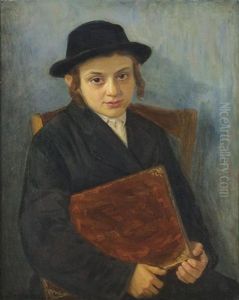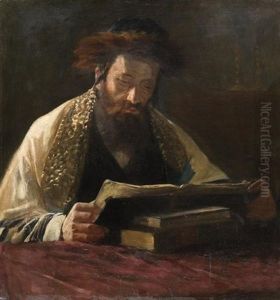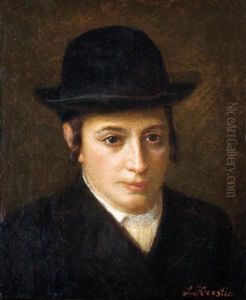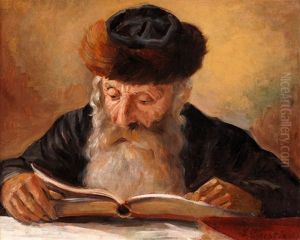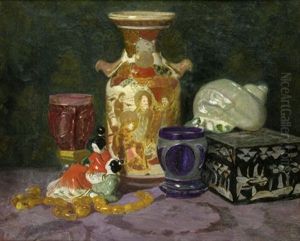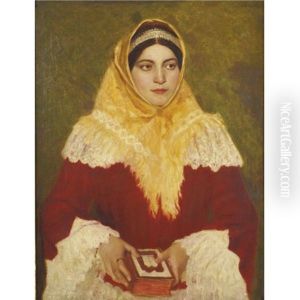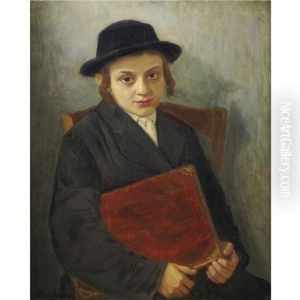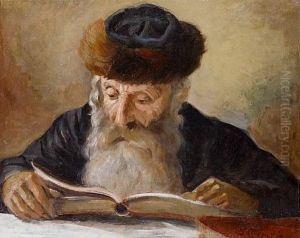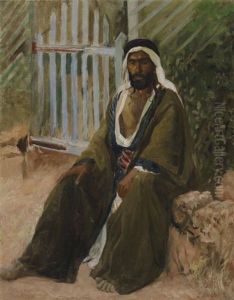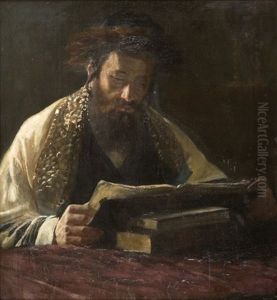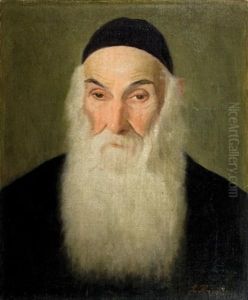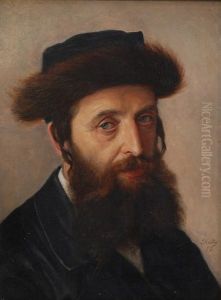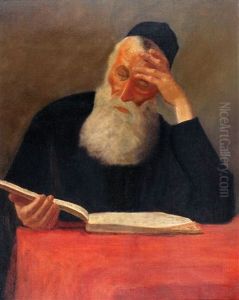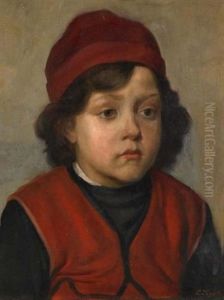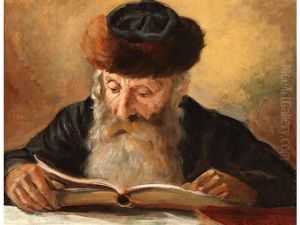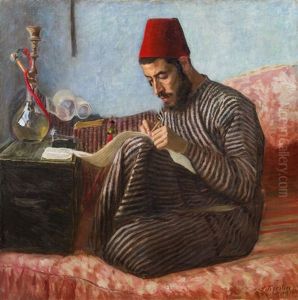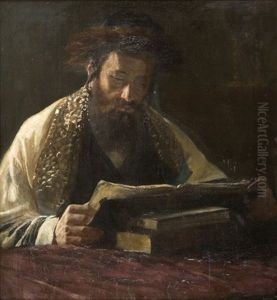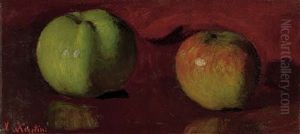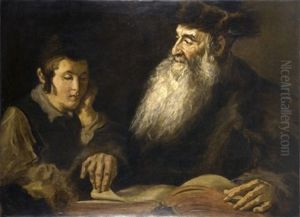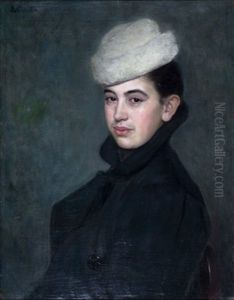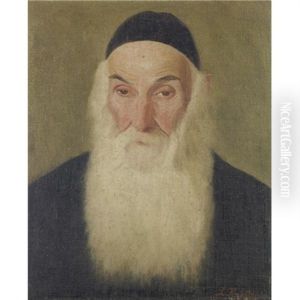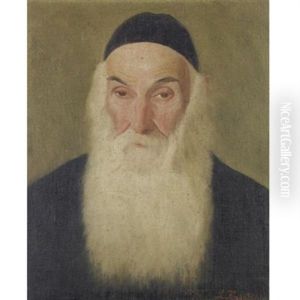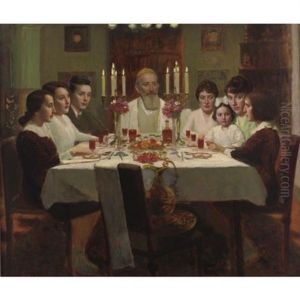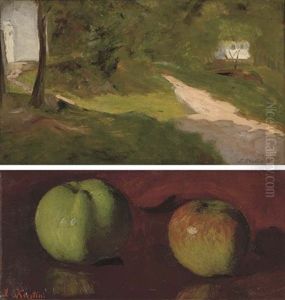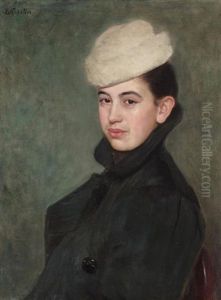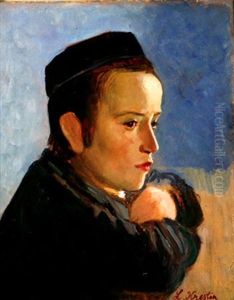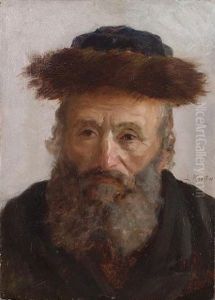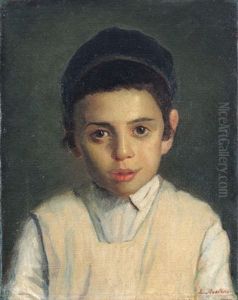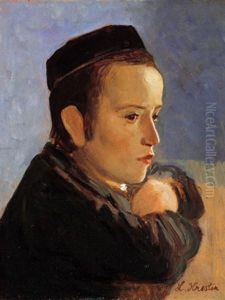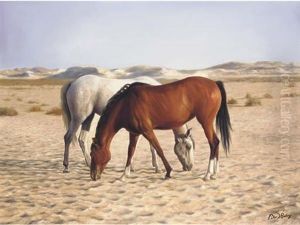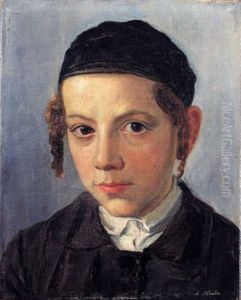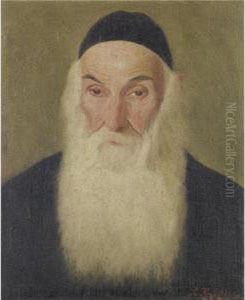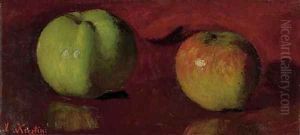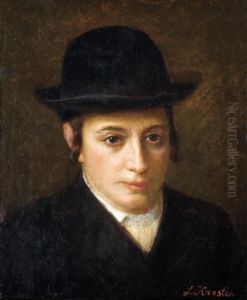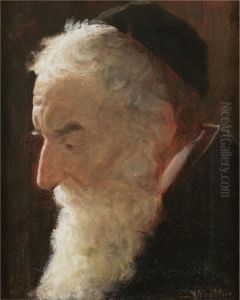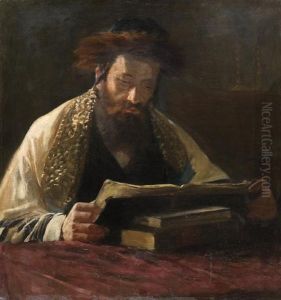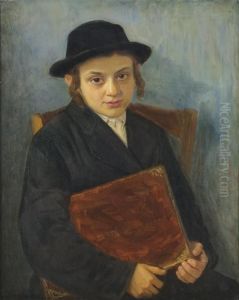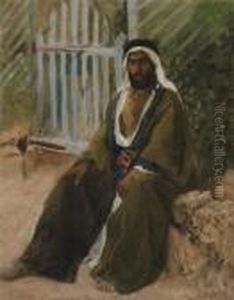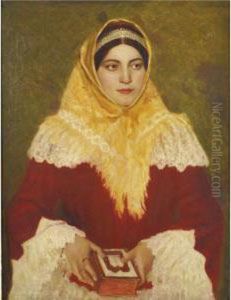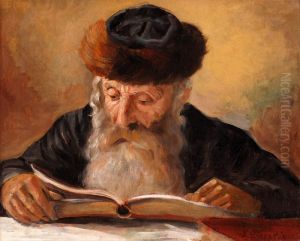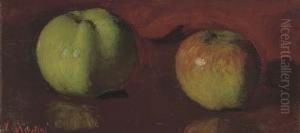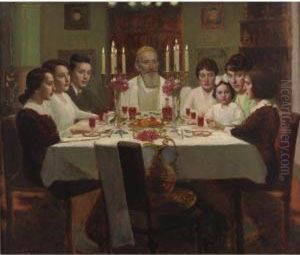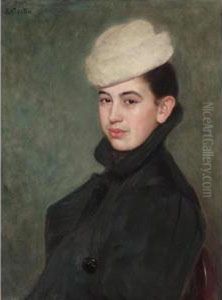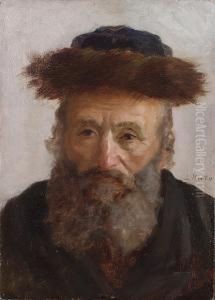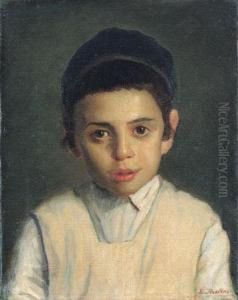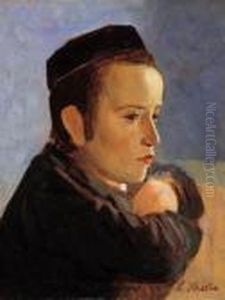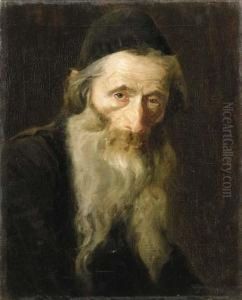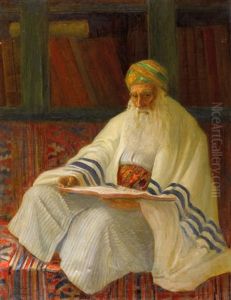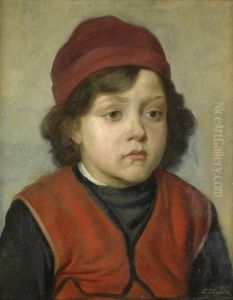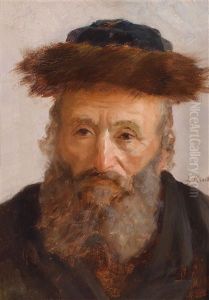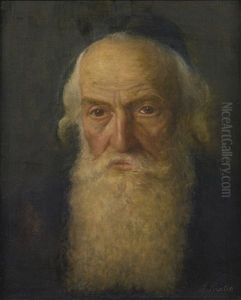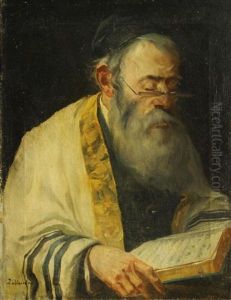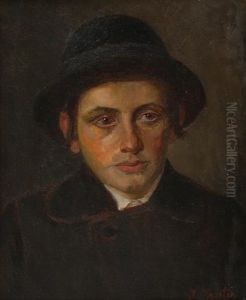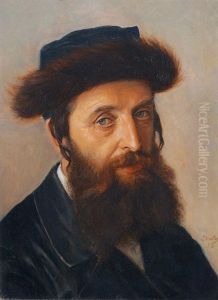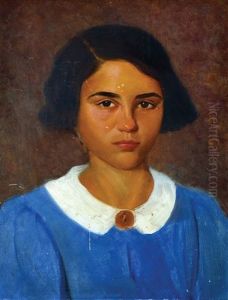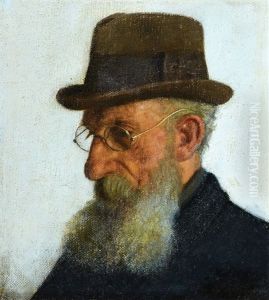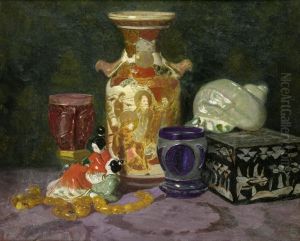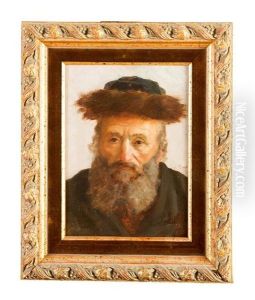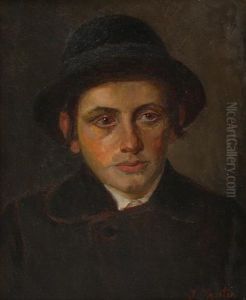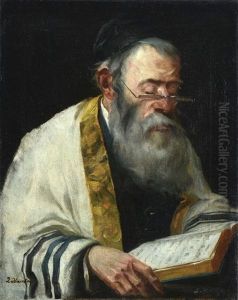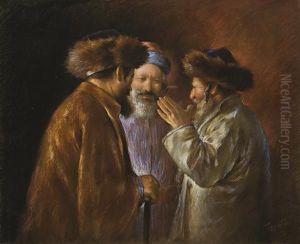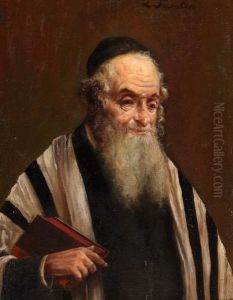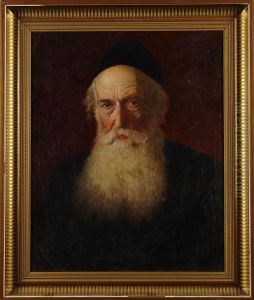Lazar' Leibovich Krestin Paintings
Lazar' Leibovich Krestin was a Russian-born painter, known for his realistic and expressive portrayals of Jewish life, as well as his works that captured the broader human condition. Born on January 16, 1868, in the town of Ruzhany, which was then part of the Russian Empire and is now in Belarus, Krestin was exposed to the traditions and hardships of Jewish shtetl life, which would later become a central theme in his artwork.
Krestin demonstrated artistic talent early on and sought to develop his skills. He moved to Vilnius, which was a significant cultural center, to study art. His dedication and talent earned him a place at the prestigious Vienna Academy of Fine Arts, where he studied from 1890 to 1894 under the guidance of influential artists such as Christian Griepenkerl and Leopold Carl Müller. Müller, in particular, was known for his Orientalist style, which may have influenced Krestin's interest in ethnographic and genre scenes.
After his studies, Krestin traveled extensively, living in various European cities including Munich, Berlin, and Paris. These experiences enriched his artistic vision. His works from this period are characterized by a strong realist approach, combined with elements of the emerging Symbolist movement. Krestin's paintings often depict scenes of Jewish life, including religious customs, daily activities, and the challenges faced by Jewish communities in Eastern Europe.
Krestin's art gained recognition and was exhibited in numerous exhibitions, including those at the Vienna Künstlerhaus and the Berlin Secession. Despite his success, Krestin's life was marked by the broader historical turmoil of the era. World War I and the subsequent upheaval affected Krestin personally and professionally. In the later years of his life, he continued to paint, but his work from this period reflects a more somber and introspective mood, likely influenced by the widespread suffering and destruction he witnessed.
Lazar' Leibovich Krestin's contribution to art is significant in its portrayal of a cultural and historical milieu that has since dramatically changed. He captured the essence of a way of life that was on the cusp of transformation, and he did so with empathy and a deep understanding of the human spirit. Krestin passed away on February 12, 1938, in the city of Vienna, Austria. His legacy lives on through his paintings, which continue to be appreciated for their historical value and artistic merit.
